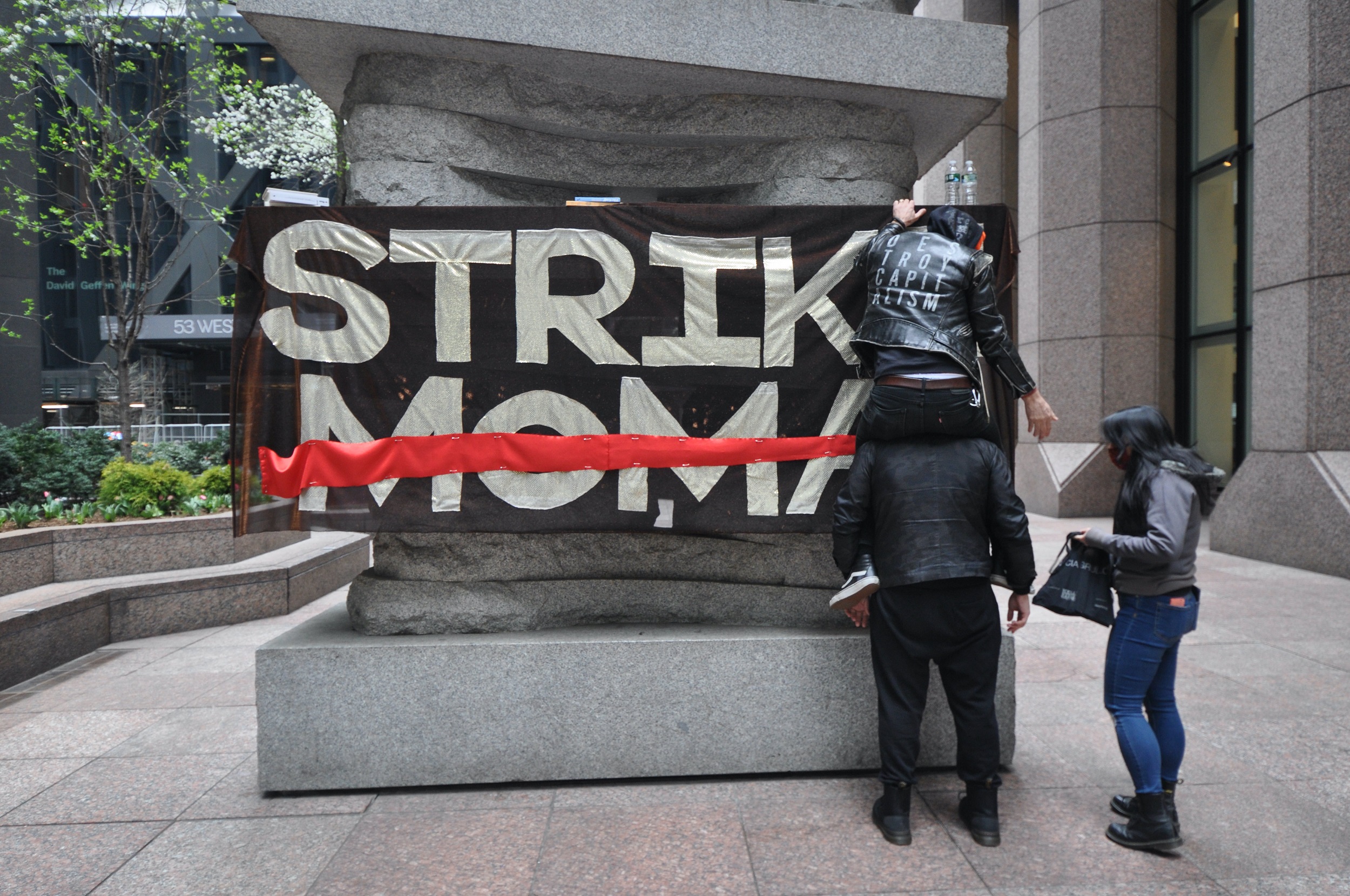Who Funds American Art? Everyone Does.
PDF: Washington, Who Funds American Art?
Editors’ Note: This response is part of the final “Toward a More Inclusive Digital Art History” project generously funded by the Terra Foundation for American Art. Click on the Toward a More Inclusive Digital Art History tag for all contributions to the series.
In 2021, an investigation into Leon Black’s company, Apollo Global Management, revealed that he had paid sex trafficker and alleged financial adviser Jeffrey Epstein $158 million for tax advice—advice said to have saved Black $2 billion over the course of his and Epstein’s relationship.1 I remember Black—who is heavily enmeshed in Barabási and Shekhtman’s network graph of billionaire trustees—saying at the time that his relationship with Epstein was purely business and was unrelated to Epstein’s sex trafficking. As an experiment, I humored him by applying this lens of “purely business” to other elements of his life: why not read his donations to MoMA as a manifestation of a ruthless will to control his fortune? Why not consider his donations as part of a wealth-management strategy? After all, Black paid Epstein from a shell company created to manage his art holdings. Eventually, MoMA trustees pushed Black out of the chair seat.2

Our most prominent, mainstream-approved talk about changing the boards of art museums tends to focus on individuals, especially those with one of two issues. These are issues of moral failings—your Leon Blacks, your Sacklers, your Warren Kanderses, all of your people with Bad Money—or bad-faith actions, like foundations that get criticized for being exclusive while benefiting from claiming to be public.3 Unfortunately, critiques on the basis of Bad Money and Bad Faith necessarily assume there is Good Money and Good Faith—but when we are talking about billions of dollars, there is no such thing. It is too late by then to play fair with what are truly world-shaping amounts of money. By the time art is bought with it, our entire society has traded in other possibilities. When we could have livable wages, cheaper housing, universal health care, decent public schools, and mitigations for climate change, we do not get any of those things. Donors and wealthy board members go to outrageous and perfectly legal lengths, especially including philanthropy, to avoid paying taxes. And the IRS paperwork that underpins the datasets analyzed in this section also underpins that official legality. However, having billions or even hundreds of millions of dollars is not a manner of saving money anyway; it is only possible by making money off of other people’s labor. Who pays for American art? We all pay for American art.
While the press covers the controversies that go on in art museums, their reporting tends to be access-based rather than investigative, and the Good Money and Good Faith standards prevail. They tend to accept the terms that museums set for understanding, including the idea that we should be grateful to wealthy people for buying relatively few artworks for relatively few people to enjoy. Groups like Strike MOMA and Decolonize This Place, on the other hand, recognize that the entire system of value on which the modern art museum is based—and we can glimpse some of that system in graph form here—devalues people first, and continually. While these groups’ actions have included spending weeks inside of museums to protest certain individual board members (like Kanders at the Whitney Museum of American Art), their analysis of our situation rightfully links the boards’ contributions to US imperialism abroad, its colonial and slavery-dependent past, and its present-day domestic (orchestrated) decay. In their framework, Strike MOMA nails it: “Their accumulation has only been possible through our dispossession. Stolen land, stolen people, stolen labor, stolen wealth, stolen worlds, stolen horizons. This is the modernity to which MoMA is a monument.”4 Indeed. If MoMA decided Black was not worth having at the head of its board, it also decided that Black’s indiscretions were not worth dissociating the museum from him completely. He remains on the board today—business as usual.5
Cite this article: Terence Washington, “Who Funds American Art? Everyone Does,” in “Reflecting on ‘Toward a More Inclusive Digital Art History,’” special section, ed. Diana S. Greenwald, Panorama: Journal of the Association of Historians of American Art 9, no. 2 (Fall 2023), https://doi.org/10.24926/24716839.18324.
Notes
- Matthew Goldstein, “Leon Black to Step Down as C.E.O. of Apollo,” New York Times, March 22, 2021, https://www.nytimes.com/2021/03/22/business/leon-black-apollo.html. ↵
- Robin Pogrebin and Matthew Goldstein, “Leon Black to Step Down as MoMA Chairman,” New York Times, March 26, 2021, https://www.nytimes.com/2021/03/26/arts/design/leon-black-moma-chairman.html. ↵
- Jeff Ernsthausen, “How the Rich Reap Huge Tax Breaks from Private Nonprofits,” ProPublica, July 26, 2023, https://www.propublica.org/article/how-private-nonprofits-ultrawealthy-tax-deductions-museums-foundation-art. ↵
- “Strike MOMA: Framework and Terms for Struggle,” Decolonial Hacker, April 8, 2021, https://decolonialhacker.org/article/framework-and-terms-for-struggle-strike-moma. ↵
- The Museum of Modern Art, “Officers and Trustees,” accessed September 30, 2023, https://www.moma.org/about/trustees. ↵
About the Author(s): Terence Washington is an independent curator and writer.

